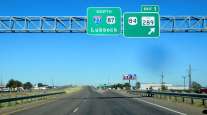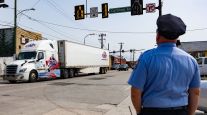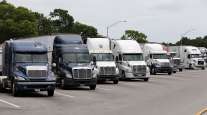Staff Reporter
Uniform Road Laws, Reduced Congestion Could Ease Interstate Trucking, Experts Say
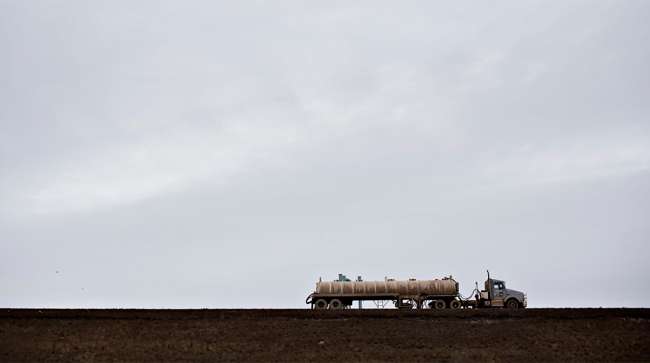
WASHINGTON — Harmonization among states on road laws relating to capacity would vastly improve interstate trucking, according to industry experts.
States establish weight limits for their roadways, and these regulations sometimes differ between neighboring states.
Rich Goldsbury, president of Doosan Bobcat North America and Oceania, used the example of a driver hauling double flatbeds across one state and having to dismantle to single flatbeds before reaching neighboring state lines. He spoke at the Association of Equipment Manufacturers’ briefing May 15, hosted in conjunction with Infrastructure Week.
Infrastructure Week is marked nationally by education and advocacy events that highlight the state of roads, bridges, rails, ports, airports and more.
Goldsbury, whose company relies largely on flatbed trucks, said that these differing rules create delays for truckers.
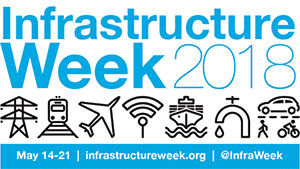
Ben McLean, CEO of Ruan Transportation Management Systems, acknowledged that roadway restrictions exist because of states’ ability to handle heavy loads. The infrastructure capacity of Rhode Island differs greatly from that of Wyoming. However, McLean recommended that states work on a regional basis to develop weight laws. Based in Iowa, Ruan is a logistics company that runs about 4,000 trucks.
“[I’m] frustrated by the harmonization of interstate trucking,” Goldsbury said. “It really impacts us. That’s a big challenge for us.”
The Association of Equipment Manufacturers’ event offered an opportunity for manufacturing and transportation industry representatives to discuss the role infrastructure plays in the movement of products. Panelists spoke of “pain points” that are related to infrastructure and bear negative effects on the trucking industry.
One of these “pain points” is the overall lack of truck drivers, according to McLean. American Trucking Associations last year reported a shortage of more than 50,000 drivers.
Workforce development — and the quality of life for existing truck drivers — would improve with infrastructure investment, McLean said. He said that drivers would waste fewer hours if congestion points along the highway system and in cities were addressed.
“It is difficult to get motor carriers driven by professional drivers to move freight. We really feel that crunch,” McLean said. “[The] congestion points that we have in our national highway system are quite severe.”

Chao
Infrastructure funding remains a challenge for federal and local government agencies. Transportation Secretary Elaine Chao said at the kickoff of Infrastructure Week May 14 that the Trump administration still is sifting through a slew of financing mechanisms, from a vehicle-miles-traveled fee to a fuel tax, to bolster infrastructure funding.
McLean said that raising the gas tax, untouched since 1993, would be a low-cost mechanism to boost funds.
The federal tax on diesel is 24.4 cents a gallon, and on gasoline it’s 18.4 cents.
Goldsbury said state and local agencies need a source of funding that is more reliable than the Highway Trust Fund, which assists states with maintenance and construction projects. The fund is supported by the federal fuel tax. But improvements in fuel consumption and shifting driving habits contribute to the account’s steady decline, prompting several general fund transfers in recent years to maintain its solvency.
ATA President Chris Spear, in a statement May 14, described the Highway Trust Fund as “running on fumes.”
“If no action is taken by 2020, the Highway Trust Fund will be flat broke,” Spear said.
The White House’s funding principals unveiled Feb. 12 would rely significantly on private funds of as much as $1.3 trillion to reach a topline of $1.5 trillion over 10 years.
Goldsbury said that infrastructure investment is essential for the movement of goods, especially in rural areas such as the North Dakota community in which a Bobcat plant is based. He said drivers must traverse a two-lane highway to reach the factory, which can sometimes face disruptions from snow.
“It’s a challenge to us from a structural standpoint. We live and work in North Dakota. Because of the lack of population, the lack of highway possibilities, it’s difficult to get material in and out of North Dakota,” Goldsbury said. “It’s critical to me that infrastructure is well-funded.”


